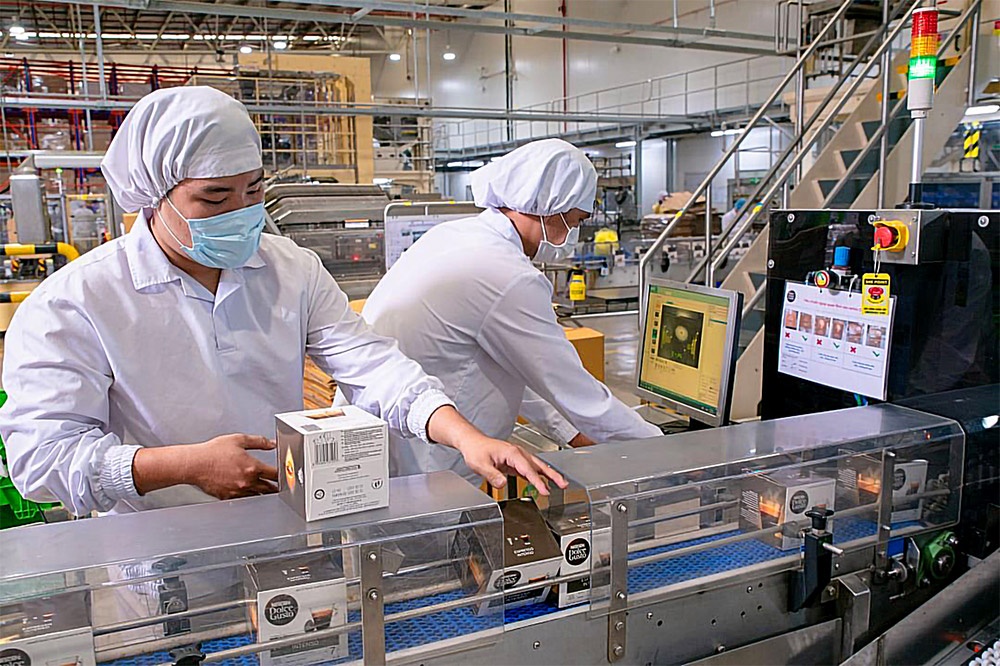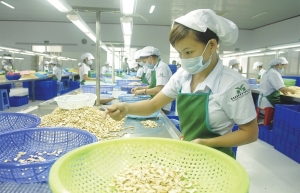More leverage coming for EU trade deal success
How have trade and economic ties performed since the EU-Vietnam Free Trade Agreement (EVFTA) took effect in August 2020?
 |
| Julien Guerrier, Ambassador and head of the European Delegation to Vietnam |
I am glad to say that the bilateral commercial and economic links have been developing quite well. The EVFTA has become an important aircraft, uplifting the commercial links between the two economies to an unprecedented height. We have witnessed the positive impacts of the EVFTA on bilateral trade between Vietnam and the EU.
In 2022, the EU’s exports to Vietnam went up by 18 per cent and the Vietnamese exports to the EU grew even more impressive at 33 per cent, according to Eurostat. Such growth is the strongest bilateral export expansion between Vietnam and any trading partners during the year. In fact, the bilateral trade has grown robustly since the implementation of the EVFTA, and only decreased insignificantly in 2020.
During the period of 2020-2022, the annual growth in two-way trade was extremely high, annualised at 13 per cent, even when taking into account the negative growth of -5 per cent in 2020. The enforcement of the trade agreement has significantly cushioned the big negative drop of exports from both economies during the crisis and helped bring about the positive bounce back of their trade performance.
What are your expectations of trade and investment cooperation between Vietnam and the EU in the coming years?
To have a precise prediction of the future trend, we should take a look into the bilateral trade pattern over recent years. Before the implementation of the EVFTA, the average annual growth of Vietnam’s exports to the EU was 5-7 per cent and the EU exports to Vietnam at 3-5 per cent.
With the only exception of 2020 when the global economic downturn affected all economies, the bilateral trade ties between Vietnam and the EU have been growing strongly at double-digit level.
In 2021, the EU exports to Vietnam expanded by 21 per cent, while its imports from Vietnam grew by 12 per cent. This trend continued in 2022 with the EU exports increasing by 18 per cent and Vietnam’s exports by 33 per cent. The period 2017-2022 witnessed an annualised growth of 5 per cent for the EU exports and almost 11 per cent for Vietnamese exports, which was almost double the normal average annual growth rate in the absence of an FTA.
Investment-wise, the EVFTA has contributed to improving Vietnam’s attractiveness in the eyes of EU and non-EU investors. The EU has been constantly the sixth-biggest foreign direct investment partner of Vietnam out of around 100 countries and territories that make investments into the country.
Data from the Ministry of Planning and Investment indicates that the EU has a total stock of investment of approximately $28.3 billion, with around 2,450 projects.
Despite the global nearshoring trend where investors tend to reduce their geographically distant investments and bring them back closer to their home countries, EU investors continued to pour an additional $810 million into Vietnam during January-September 2023. The EVFTA enforcement has also been successful in creating spill-over effects, turning Vietnam into a regional production hub by attracting a large number of investors from non-EU countries.
Based on this factual trade and investment development, we can predict a stable growing trend for the bilateral EU-Vietnam trade and investment flows in the coming years, even if we could witness a deceleration in growth or even some minor decreases after the miraculous expansion over the past few years.
Similarly, investment flows do not only rely on the tangible advantages in tariff elimination or the legal certainty offered by the EVFTA, investors from the EU and other partners pay a close attention to the reforms undertaken by Vietnam in terms of improving its business climate.
 |
| Strong implementation of free trade commitments can resolve technical barriers in market access |
What is the potential of the Vietnamese market for European businesses?
The Vietnamese market is quite attractive, but there are also certain technical barriers. The past 15 years have witnessed a magical increase in disposable income of Vietnamese people, and this certainly wields a strong influence on any business decision. Vietnamese GDP per capita has risen from around $910 in 2007 to almost $4,300 in 2023.
Being proud of these achievements is surely how the Vietnamese people and government are feeling now. But what Vietnam has achieved so far is still below its potential, and that potential cannot be optimised in the absence of vigorous reforms and a strong determination in simplifying cumbersome administrative procedures and eliminating complicated licenses and sublicenses.
The EU is closely observing Vietnam’s implementation of its FTA commitments, which should help resolve technical barriers in market access. We cannot wait to see stronger growth of trade and investment and turn the potential of our bilateral relations into reality.
Around 10 EU member states have not yet ratified the EU-Vietnam Investment Protection Agreement. What are the reasons behind this?
The EU member states’ ratification of this has seen some progress recently. As of October 2023, 17 member states have ratified the investment deal. It requires ratification by all EU member states before it can enter into force and replace the current 20 bilateral investment protection agreements between Vietnam and EU member states.
For some member states, the endorsement is more complicated, as it involves wide consultations with parliamentary bodies at regional levels. Relevant services on the EU side have been trying their best to accelerate this process.
Vietnam is seeking both technical and financial support from the international community to implement its Just Energy Transition Partnership (JETP). What will be the EU’s assistance for Vietnam in this regard?
The EU’s support for Vietnam’s JETP amounts to a total of €876.5 million ($959.9 million), of which €176.5 million ($193.3 million) are in grants. The EU is the largest donor in grants for Vietnam’s JETP.
The EU is already providing assistance to energy transition under a €142 million ($155.5 million) grant agreement, which supports the development of renewable energy, energy efficiency and Vietnam’s energy information system.
We also recently signed an agreement with the French Development Agency allocating €16.6 million ($18.18 million) in grants towards the Vietnam Electricity-Team Europe Energy Transition Facility, which supports Vietnam Electricity on early-stage project development of JETP relevant investments and will accompany their implementation with technical assistance. This EU contribution is expected to leverage an additional €1 billion ($1.095 billion) in loans from financial institutions (AFD, KfW Development Bank, and others).
The European Investment Bank (EIB) has committed €200 million ($219 million) in loans to support the Bac Ai hydropower pumped storage, which is a priority JETP project and is included in the Power Development Plan VIII. This is an energy storage project with a capacity of 1,200MW to be developed in the south-central province of Ninh Thuan.
The requirement for electricity storage and fast reserve capacity that this project aims to provide will reinforce the integration of renewable energy, such as wind and photovoltaics, into the grid. The total loan amount for Bac Ai is around €600 million ($657.1 million), including contributions from the various sources.
Additionally, the EIB has allocated €500 million ($547.57 million) in loans for investments specifically for the JETP, for which specific projects are still to be identified. Moreover, the EU envisages further support to the United Nations Development Programme in its capacity as support agency of the JETP Secretariat.
 | EU-Vietnam Free Trade Agreement implementation kicks into higher gear Vietnam and the EU are amplifying investment and trade ties seconded by a bilateral free trade deal, with the latter committing to assist the former in implementation. |
What the stars mean:
★ Poor ★ ★ Promising ★★★ Good ★★★★ Very good ★★★★★ Exceptional
Related Contents
Latest News
More News
- Partnerships drive sustainable finance (January 07, 2026 | 09:23)
- FDI inflows reach $38.42 billion in 2025 (January 06, 2026 | 17:55)
- $2.1 billion Nghi Son LNG-fired thermal power plant waits for investor (January 06, 2026 | 17:51)
- GE Vernova powers up Vietnam with first 9HA gas power plant in the country (January 06, 2026 | 16:54)
- Solid finish for manufacturing after volatile year (January 06, 2026 | 08:50)
- Meiko strengthens Vietnam operations with new PCB plants (January 06, 2026 | 08:49)
- Ho Chi Minh City backs $2 billion AI data centre with dedicated task force (January 06, 2026 | 08:43)
- PM sets January deadline for high-speed rail consultant (January 06, 2026 | 08:40)
- New decree spurs on PPP implementation (December 31, 2025 | 19:01)
- Global alliance develops $1 billion AI data centre network in Vietnam (December 30, 2025 | 10:08)

 Tag:
Tag:

















 Mobile Version
Mobile Version